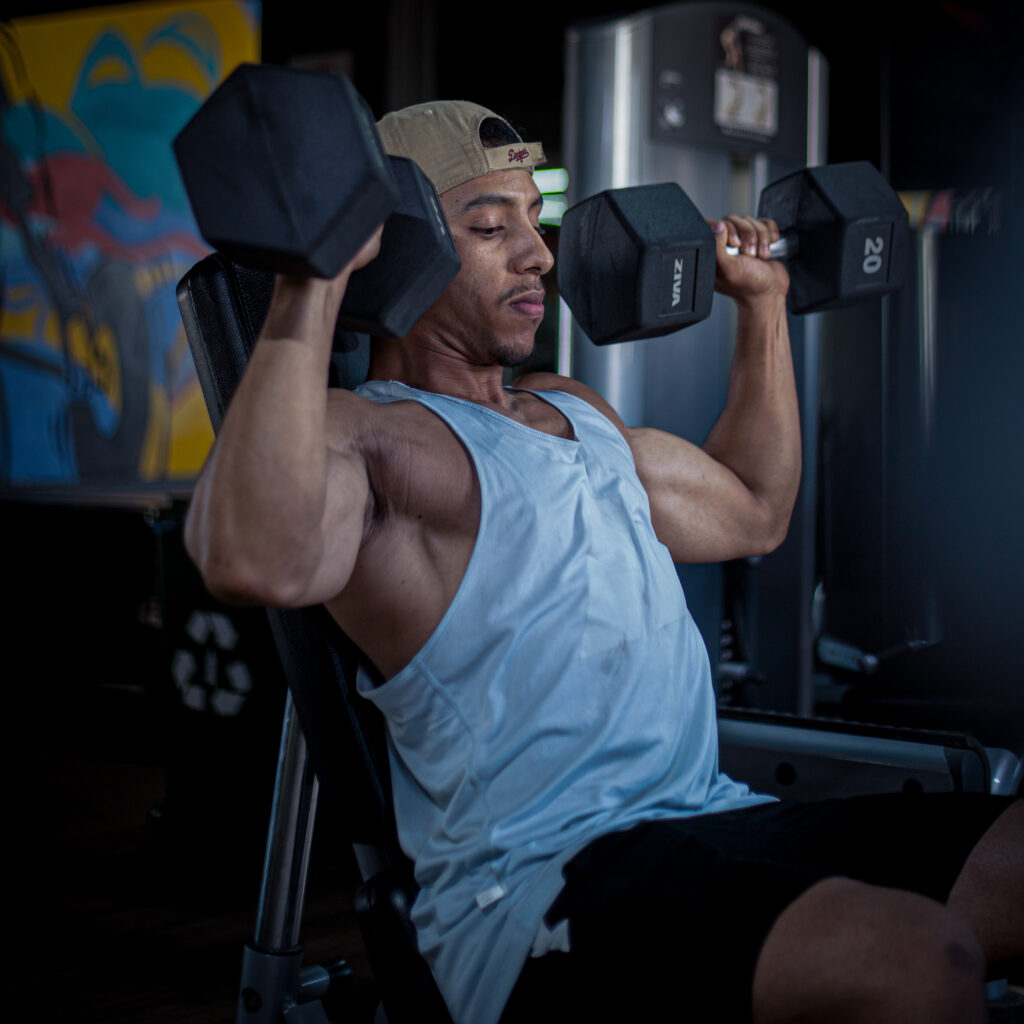Strength training for women beginners has become one of the most important parts of a well-rounded fitness plan for women. Whether your goal is to lose weight, build lean muscle, improve health, or simply feel stronger, strength training offers benefits that cardio alone cannot.
For beginners, stepping into the gym or starting at home can feel overwhelming. Questions like “Where should I start?” or “Do I need heavy weights?” are common. This guide will break everything down for you—covering workouts, recovery, tips, and common mistakes—so you can begin your strength journey with confidence.

Table of Contents
👉 Related: Beginner Strength Training Plan
Why Strength Training Matters for Women
Historically, women often avoided lifting weights due to myths like “lifting makes you bulky.” In reality, strength training helps women tone muscles, burn fat more effectively, and prevent long-term health issues such as osteoporosis.
Key Benefits:
- Boosts metabolism: Muscle burns more calories than fat, even at rest.
- Improves bone density: Essential for women’s health as they age.
- Enhances daily strength: From carrying groceries to playing with kids.
- Supports weight loss: Builds lean muscle while torching fat.
- Increases confidence: Seeing strength gains is empowering.
👉 Related: Strength Training for Weight Loss
Strength Training for Women Beginners at Home
You don’t need a gym to get started. A home workout with just your bodyweight or a pair of dumbbells can be just as effective for beginners.
Sample At-Home Beginner Workout
- Squats (bodyweight) – 3 sets of 12 reps
- Push-ups (knee or wall for beginners) – 3 sets of 8–10 reps
- Dumbbell Rows – 3 sets of 10 reps each arm
- Glute Bridges – 3 sets of 12 reps
- Plank Hold – 3 rounds of 20–30 seconds
👉 Related: Bodyweight Strength Training
Best Strength Training for Women Beginners (3-Day Routine)
For those ready to start a structured 3-day full-body routine, here’s an example:
Day 1 – Lower Body
- Squats – 3×12
- Dumbbell Deadlifts – 3×10
- Glute Bridges – 3×12
Day 2 – Upper Body
- Push-ups – 3×8
- Dumbbell Shoulder Press – 3×10
- Dumbbell Rows – 3×12
Day 3 – Full Body & Core
- Lunges – 3×10 each leg
- Plank Holds – 3×30 seconds
- Mountain Climbers – 3×20
👉 Related: Full Body Strength Training
Dumbbell Exercises for Female Beginners
Dumbbells are one of the best tools for women starting out—they’re affordable, versatile, and easy to use at home or in the gym.
- Dumbbell Deadlifts – Strengthens glutes, hamstrings, and lower back.
- Dumbbell Bench Press – Builds chest and arms.
- Dumbbell Lunges – Targets quads and glutes while improving balance.
- Overhead Shoulder Press – Boosts upper body power.
👉 Related: Dumbbell Strength Training
Recovery After Strength Training

One of the most important parts of training is recovery. Beginners often want to train every day, but your muscles actually grow when you rest—not during the workout itself.
Muscle Recovery Tips
- Take Rest Days – At least 1–2 per week.
- Stretch Post Workout – Helps reduce soreness and prevent injury.
- Prioritize Sleep – Aim for 7–9 hours.
- Eat Protein – Supports muscle repair and growth.
- Hydrate – Water aids recovery and performance.
👉 Related: Strength Training Recovery
Strength Training vs Cardio: Which is Better for Women?
Many women wonder whether they should focus on cardio or weights. The truth is: both matter, but strength training has more lasting benefits for fat loss and muscle tone.
- Cardio burns calories during exercise.
- Strength Training continues burning calories after workouts through the “afterburn effect.”
- Best Approach: Combine both, but prioritize lifting for long-term results.
👉 Related: Strength Training vs Cardio
Post Workout Stretching for Women Beginners
Stretching is often skipped but is key for recovery and mobility.
Recommended Stretches:
- Hamstring Stretch – Loosens the back of the legs.
- Chest Opener – Reduces stiffness from push-ups and presses.
- Hip Flexor Stretch – Helps after squats and lunges.
- Child’s Pose – A full-body relaxer.
Common Strength Training Mistakes for Beginners
Avoid these to make faster, safer progress:
- Using weights that are too heavy too soon.
- Skipping warm-ups and cool-downs.
- Not tracking progress.
- Overtraining without rest days.
- Copying random workouts without a plan.
👉 Related: Common Strength Training Mist
Free Resources for Women Beginners
To help you get started:
- Beginners Strength Training Workout for a Woman PDF – Look for downloadable guides online.
- Women’s Strength Training Program PDF – Many trainers share free structured programs.
- YouTube Workouts – Follow along with beginner-friendly routines.
Conclusion
Strength training for women beginners is one of the most empowering ways to improve health, lose fat, and build lean muscle. By starting with simple exercises, prioritizing recovery, and progressing gradually, you’ll build confidence and strength for life.
Whether your goal is weight loss, toning, or overall fitness, the key is consistency—and remembering that rest is just as important as training.
👉 Start your journey today with the Progressive Overload for Beginners Guide.
FAQs
What is the best strength training for women beginners?
A mix of bodyweight and dumbbell exercises performed 2–3 times per week.
Can women beginners do strength training at home?
Yes! Bodyweight moves and resistance bands are perfect for home workouts.
Do I need to lift heavy weights to see results?
No. Beginners see results with lighter weights and progressive overload.
How many rest days should women take when starting?
At least 1–2 rest days per week to allow proper muscle recovery.
Is strength training better than cardio for women?
For long-term fat loss and toning, strength training is more effective, but cardio still plays a supporting role.
Visit my Instagram account for more
